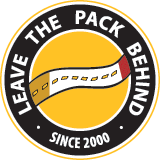

There are many factors that lead to why some young adults are more likely to smoke than others.

Social Smoking

Many young adults who smoke cigarettes identify themselves as “social smokers”. Social smokers often progress from smoking only while partying or in social situations to smoking in other circumstances (such as when bored or stressed). This escalation of smoking can lead to long-term addiction.

Hookah

A hookah is a water pipe that is used to smoke flavoured tobacco or herbal/plant mixtures known as shisha. 30% of Ontario young adults (20-24 years) have tried hookah.1

Vapes

Vapes (also known as electronic cigarettes or e-cigs) are hand-held, battery-powered devices that are designed to deliver nicotine. 16% of Canadian older youth and young adults (16-30 years) have tried vapes.1

Cigars and Cigarillos

Like cigarettes, cigars and cigarillos contain tobacco and other chemicals. However, unlike cigarettes, the tobacco is wrapped up in tobacco leaf instead of paper. 45% of Ontario young adults (20-24 years) have tried a cigar or cigarillo.1

Smokeless Tobacco

Smokeless tobacco (chew or spit tobacco, dip, snuff, or snus) is tobacco in the form of loose leaves or fine powder. 12% of Canadian young adults (20-24 years) have reported ever using smokeless tobacco.1

Traditional (Sacred) Tobacco versus Non-Traditional (Commercial) Tobacco
Traditional (aka Sacred) tobacco use is intended to respect Indigenous peoples customs whereas non-traditional use of tobacco is dangerous and harmful.1

Marijuana

Marijuana (also known as weed, pot, MJ) is dried, crushed leaves and flowers from the cannabis plant that is commonly smoked. 33.5% of Canadian young adults (18-29 years) have used marijuana in the past year.1
Smoking Rates among Young Adults (18-29 years) in Ontario
